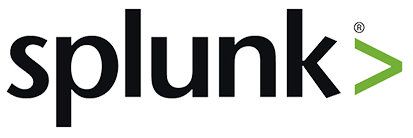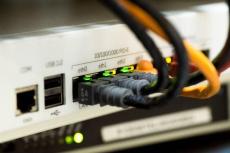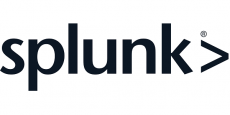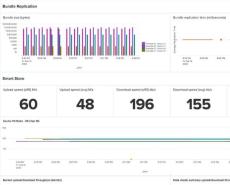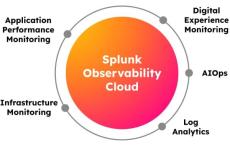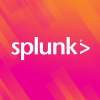|
By Laiba Siddiqui
Every business needs a well-designed network architecture. The network architecture is essential to how you organize and manage your IT infrastructure to transfer data between devices and applications securely and efficiently. A network architecture comprises a layered structure, which breaks down communication tasks into smaller parts. This way, each layer can focus on a specific function and avoid complex combinations of cases.
|
By Muhammad Raza
AI infrastructure is to the technology stack that runs AI workloads. Any AI technology stack consists of: AI technologies are highly resource intensive and typically rely on bespoke infrastructure as organizations aim to maximize compute efficiency, reliability and scalability of their AI infrastructure.
|
By Teneil Lawrence
According to The State of Developer Ecosystem 2023 report, which surveyed more than 26,000 developers from around the world, 73% of developers have experienced burnout.
|
By Joanna Zouhour
We all have been there! Getting the largest metrics plan available, turning on real-time monitoring, and…. You know what happens next… BIG BILL! With the explosion of telemetry from microservices, containers, and cloud stacks, engineering teams often have to choose between data and budget. To help our Splunk champions, we are introducing Archive Metrics to make storing data up to ten times cheaper.
During the early periods of cloud computing, most organizations used single-location data centers. These single-location data centers often faced higher risks of downtime and service disruption due to localized disasters or hardware failures. As a solution to these problems, cloud services like AWS introduced the concept of availability zones. This introduction was an important milestone in the evolution of cloud computing, as it facilitated high availability through geographic distribution.
|
By Leanne Mitton
To buy or to build... that is the question businesses must ask when deciding to buy off-the-shelf software or create custom software to satisfy their business needs. Deciding whether to buy off-the-shelf software or create custom software is a lot like choosing between a ready-made meal and cooking a meal from scratch. It's a big decision for any business (or hungry person). Let's imagine we're planning dinner...
|
By Paul van der Eerden
Splunk gives you amazing tools to analyze system data and make business-critical decisions, react to issues, and even proactively address future problems. And since it is so good at those things, it’s not surprising that there are myriad tools to help you reflexively analyze your own Splunk deployment.
|
By Austin Chia
Data analysis is crucial in today's businesses and organizations. With the increasing amount of data being created at 328.77 million terabytes of data per day, and them being readily available to most businesses, having efficient tools that can help analyze and interpret this data effectively is essential. In this article, we will discuss the top 9 best data analysis tools currently used in the market today.
|
By Austin Chia
Time series data is becoming more prevalent across many industries. Indeed, it is no longer limited to financial data. As the need to handle time-stamped data increases, the demand for specialized databases to handle this type of data has also grown. The solution: Time series databases. In this introduction guide, we'll explain all the basics you need to know about time series databases, including what they are, how they work and are applied, and some of their benefits.
|
By Joanna Zouhour
Splunk’s extensible and scalable data platform has been instrumental in helping ITOps teams fully understand their tech environments and tackle any IT use case with data streaming, dashboarding, federated search, AI/ML, and more. But, with the explosion of telemetry and the growing complexity of digital systems, ITOps practitioners who rely solely on a logging solution are missing out on critical insights from their digital systems.
|
By Splunk
Join us for this part 3 of the Getting Started with Splunk Coffee Break This short webinar covers SPL Syntax & Types of Commands. It is part 3 in a series of 5 coffee breaks.
|
By Splunk
Join us for this part 4 of the Getting Started with Splunk Coffee Break This short webinar covers Splunk Knowledge Objects & Splunkbase. It is part 4 in a series of 5 coffee breaks.
|
By Splunk
Join us for this part 5 of the Getting Started with Splunk Coffee Break This short webinar covers Popular SPL Commands - stats, timechart, eval. It is part 5 in a series of 5 coffee breaks.
|
By Splunk
Find out how you can better control your monitoring costs and metrics data volume with the new "Archived Metrics" tier, available in Splunk's Metrics Pipeline Management.
|
By Splunk
Join us for part 1 of the Getting Started with Splunk Coffee Break This short webinar covers the Importance of Machine Data. It is part 1 in a series of 5 coffee breaks.
|
By Splunk
How do you become digitally resilient as an organisation? Hear from Maria Nyström, Regional Sales Manager at Splunk Sweden, about how Splunk is helping enterprises get full traceability in their environment. Splunk customers can trace any issue for any user and follow that to the application backend, the specific microservice and the infrastructure it runs on.
|
By Splunk
This video walks you through the highlights of phase 1, including deploying the OpenTelemetry Collector, viewing default dashboards, and managing built-in detectors. Enjoy!".
|
By Splunk
What is important when implementing observability? Hear all about it in this video.
|
By Splunk
Splunk Observability is built for scale at an enterprise level. You can bring in vast amounts of data in real-time, at a one-second resolution and without the need for sampling.
|
By Splunk
Organisations get a full-stack, end-to-end view of what is happening in a complex application environment. With Splunk Observability they can correlate logs, traces and metrics. They get a complete view of their application services, and can proactively see if something is going to happen and quickly detect the issue when a problem occurs.
|
By Splunk
Gaining insights from your data requires more than collecting and analyzing metrics and logs. With the acceleration of customer and business demands, site reliability engineers and IT Ops analysts now require operational visibility into their entire architecture, something that traditional APM tools, dev logging tools, and SRE tools aren't equipped to provide. Observability enables you to inspect and understand your IT stack; but what is it, and how does it differ from IT monitoring?
|
By Splunk
The hype around artificial intelligence (AI) and machine learning (ML) has exploded, sometimes overshadowing the real uses and innovations happening everyday at organizations across the globe. The reality is that applying AI and ML to data-dependent challenges presents opportunity for better security, faster innovation and overall improved efficiency.
|
By Splunk
Imagine a world where incident alerts arrive 30 minutes before problems even begin - you'd actually have the power to prevent outages and deliver a truly seamless experience to your customers. Sound impossible? Think again - the right AIOps (Artificial Intelligence for IT Operations) solution can help you maintain uptime, reduce manual incident-management tasks and increase productivity.
|
By Splunk
At Splunk, we make it easy for our customers to turn mountains of machine data in their Amazon Web Services (AWS) and hybrid environments into valuable business, operational and security insights that improve their businesses.
|
By Splunk
Most IT organizations have adopted event management as a central practice to help find and fix what's broken, but today's tools focus on managing the volume of events-they do not deliver service context. Without context, you are ill-equipped to focus on the right problem at the right time. What you need is something different-something that makes IT events less eventful and more insightful-and now, you can finally do it!
|
By Splunk
From protecting customer experience to preserving lines of revenue, IT operations teams are faced with increasingly complex responsibilities while being required to prevent outages that could harm the organization. Splunk IT Service Intelligence (ITSI) utilizes AI powered by machine learning to deliver a predictive IT and ensure optimal application performance and quality.
|
By Splunk
The financial services industry has unique challenges that often prevent it from achieving its strategic goals. The keys to solving these issues are hidden in machine data-the largest category of big data-which is both untapped and full of potential.
|
By Splunk
Let's face it - the struggle to monitor basic server metrics in modern hybrid infrastructures is real. But deploying and maintaining monitoring tools doesn't have to be a major headache. Splunk Insights for Infrastructure can help your team index both Linux and AWS data, enabling them to quickly identify and remediate the root cause of problems.
|
By Splunk
Splunk is probably the single most powerful tool for searching and exploring data you will ever encounter. Exploring Splunk provides an introduction to Splunk -- a basic understanding of Splunk's most important parts, combined with solutions to real-world problems.
|
By Splunk
Digital transformation has led to complex environments that continuously generate new data. As a result, organizations are left unsure about how to best use their data to foster growth and edge out the competition. It's not enough to just have mountains of data, it needs to be analyzed and made sense of in a way that best suits the business.
- May 2024 (8)
- April 2024 (12)
- March 2024 (15)
- February 2024 (8)
- January 2024 (20)
- December 2023 (17)
- November 2023 (31)
- October 2023 (30)
- September 2023 (18)
- August 2023 (29)
- July 2023 (21)
- June 2023 (16)
- May 2023 (21)
- April 2023 (21)
- March 2023 (27)
- February 2023 (12)
- January 2023 (11)
- December 2022 (8)
- November 2022 (15)
- October 2022 (13)
- September 2022 (20)
- August 2022 (17)
- July 2022 (28)
- June 2022 (25)
- May 2022 (10)
- April 2022 (19)
- March 2022 (16)
- February 2022 (10)
- January 2022 (17)
- December 2021 (21)
- November 2021 (23)
- October 2021 (21)
- September 2021 (16)
- August 2021 (19)
- July 2021 (45)
- June 2021 (36)
- May 2021 (22)
- April 2021 (38)
- March 2021 (32)
- February 2021 (29)
- January 2021 (20)
- December 2020 (27)
- November 2020 (21)
- October 2020 (30)
- September 2020 (22)
- August 2020 (24)
- July 2020 (30)
- June 2020 (20)
- May 2020 (34)
- April 2020 (40)
- March 2020 (21)
- February 2020 (15)
- January 2020 (23)
- December 2019 (2)
- November 2019 (1)
- October 2019 (8)
- September 2019 (3)
- August 2019 (3)
- June 2019 (2)
- May 2019 (4)
- April 2019 (1)
- March 2019 (2)
- February 2019 (1)
- January 2019 (1)
- November 2018 (2)
- October 2018 (14)
- September 2018 (14)
- August 2018 (5)
- July 2018 (4)
- June 2018 (2)
- May 2018 (4)
- April 2018 (2)
- March 2018 (1)
- February 2018 (1)
- January 2018 (1)
Splunk produces software for searching, monitoring, and analyzing machine-generated big data, via a Web-style interface.
Splunk turns machine data into answers. Regardless of your organization’s size and industry, Splunk can give you the answers you need to solve your toughest IT, security and business challenges—with the option to deploy on-premises, in the cloud or via a hybrid approach.
Work the Way Your Data Works:
- Real-Time: Splunk gives you the real-time answers you need to meet customer expectations and business goals.
- Machine Data: Use Splunk to connect your machine data and gain insights into opportunities and risks for your business.
- Scale: Splunk scales to meet modern data needs — embrace the complexity, get the answers.
- AI and Machine Learning: Leverage artificial intelligence (AI) powered by machine learning for actionable and predictive insights.
Any Question. Any Data. One Splunk.

